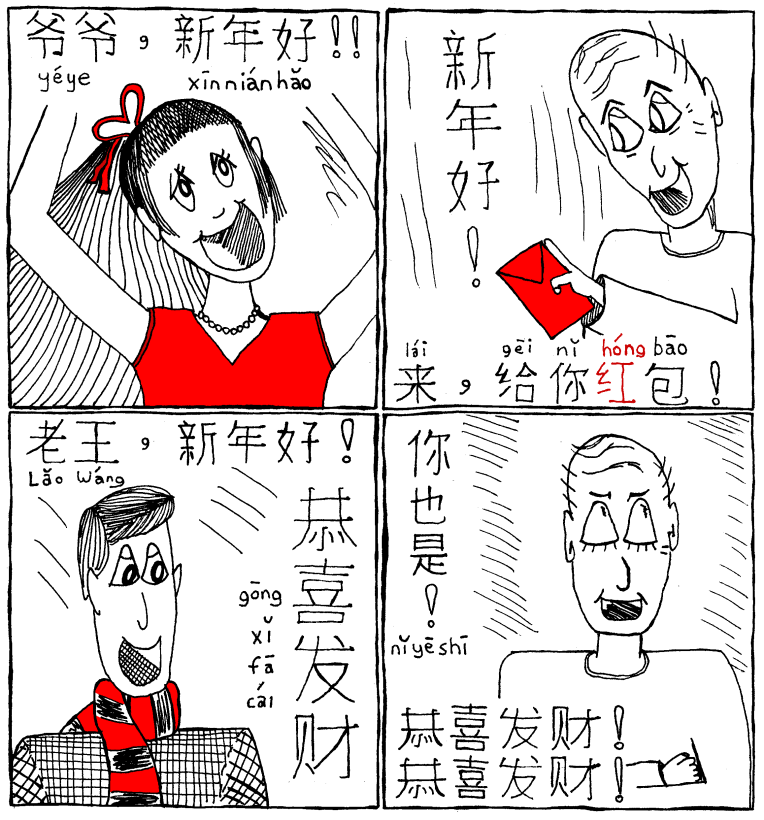“新年好!”

This is an illustration of the dialog in ChinesePod Lesson “Gong Xi Fa Cai”
Kid: 爷爷,新年好ï¼
Grandpa: 新年好ï¼æ¥ï¼Œç»™ä½ 红包ï¼
Adult: è€çŽ‹ï¼Œæ–°å¹´å¥½ï¼æå–œå‘è´¢ï¼
Grandpa: ä½ ä¹Ÿæ˜¯ï¼æå–œå‘è´¢ï¼æå–œå‘è´¢ï¼
You can listen to the audio to grok what all that means.
新年好 = xin1 nian4 hao3 = “new year good” = “Happy New Year”
æå–œå‘è´¢ = gong1 xi3 fa1 cai1 = “Wishing you a prosperous New Year”
æå–œ = “respectful happiness” = “congratulations”
å‘è´¢ = “to get rich”
æå–œå‘è´¢ does not translate well if you take it literally.
红包 = hong2 bao1 = “red envelope”
You give gifts of money to children in red envelopes. 红包!
红 and 包 I have drawn before. 红鱼 is the “red fish” and é¢åŒ… is bread.
The other day we ate hot pot at è€åŒ—京 . . . at least, I was able to read “Beijing” and as I drew this I recognized “old Beijing” . . . the restaurant is called “Old Mandarin Islamic Restaurant”. Beijing I like because it simply means “North Capital City”
Last night we were at Temple Night Club and I saw a big old 爱 and I recognized it as å‘ with more up top. 爱, pronounced ai3 is “love” and saying “I love you” in Chinese is as simple as æˆ‘çˆ±ä½ = wo3 ai4 ni3 .
In addition to the Chinese characters, drawing the (Chinese) human characters was somewhat challenging as well. I am most happy with the girl. After trying to figure out how best to draw a “cute little Chinese girl” I ended up basing my character just a teeny bit on Lin Miaoke, the infamous “Beijing Olympics ‘lip-synch’ Girl”.

Comment
Tiny Print:
<a href="" title=""> <abbr title=""> <acronym title=""> <b> <blockquote cite=""> <cite> <code> <del datetime=""> <em> <i> <q cite=""> <s> <strike> <strong>